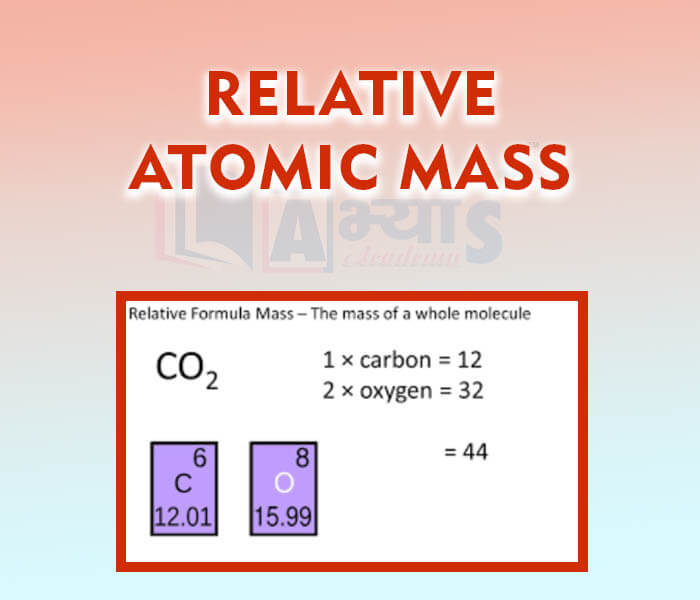Relative Atomic Mass










Relative Atomic Mass
Relative Atomic Mass: It is defined as the number of times a given atom is heavier than 1/12th of mass of 1 atom of carbon-12 (C-12) or it is the average mass of the atom as compared to 1/12th the mass of one carbon-12 atom.
The relative atomic mass, of an element is calculated from:
Chlorine :
Chlorine natuarlly exists as two isotopes, and
. The abundance of chlorine -35 is 75% and the abundance of chlorine-37 is 25%.
To calculate relative atomic mass, , of chlorine:
What is the relative atomic mass of Chlorine ? | |||
| Right Option : B | |||
| View Explanation | |||
Calculate the relative atomic mass of Chlorine . If it have two isotopes having atomic mass 35 and 37, The abundance of chlorine -35 is 75% and the abundance of chlorine-37 is 25%. | |||
| Right Option : A | |||
| View Explanation | |||
Which of the following are correct : (a) Relative Atomic Mass is defined as the number of times a given atom is heavier than 1/12th of mass of 1 atom of carbon-12. (b) Relative Atomic Mass is the average mass of the atom as compared to 1/12th the mass of one carbon-12 atom. | |||
| Right Option : C | |||
| View Explanation | |||
Students / Parents Reviews [10]
Being a parent, I saw my daughter improvement in her studies by seeing a good result in all day to day compititive exam TMO, NSO, IEO etc and as well as studies. I have got a fruitful result from my daughter.

Prisha Gupta
8thOne of the best institutes to develope a child interest in studies.Provides SST and English knowledge also unlike other institutes. Teachers are co operative and friendly online tests andPPT develope practical knowledge also.

Aman Kumar Shrivastava
10thAbhyas is a complete education Institute. Here extreme care is taken by teacher with the help of regular exam. Extra classes also conducted by the institute, if the student is weak.

Om Umang
10thIt has a great methodology. Students here can get analysis to their test quickly.We can learn easily through PPTs and the testing methods are good. We know that where we have to practice

Barkha Arora
10thIt was a good experience with Abhyas Academy. I even faced problems in starting but slowly and steadily overcomed. Especially reasoning classes helped me a lot.

Cheshta
10thAbout Abhyas metholodology the teachers are very nice and hardworking toward students.The Centre Head Mrs Anu Sethi is also a brilliant teacher.Abhyas has taught me how to overcome problems and has always taken my doubts and suppoeted me.

Shreya Shrivastava
8thMy experience with Abhyas is very good. I have learnt many things here like vedic maths and reasoning also. Teachers here first take our doubts and then there are assignments to verify our weak points.

Shivam Rana
7thMy experience with Abhyas academy is very good. I did not think that my every subject coming here will be so strong. The main thing is that the online tests had made me learn here more things.

Hiya Gupta
8thA marvelous experience with Abhyas. I am glad to share that my ward has achieved more than enough at the Ambala ABHYAS centre. Years have passed on and more and more he has gained. May the centre flourish and develop day by day by the grace of God.

Archit Segal
7thMy experience was very good with Abhyas academy. I am studying here from 6th class and I am satisfied by its results in my life. I improved a lot here ahead of school syllabus.
